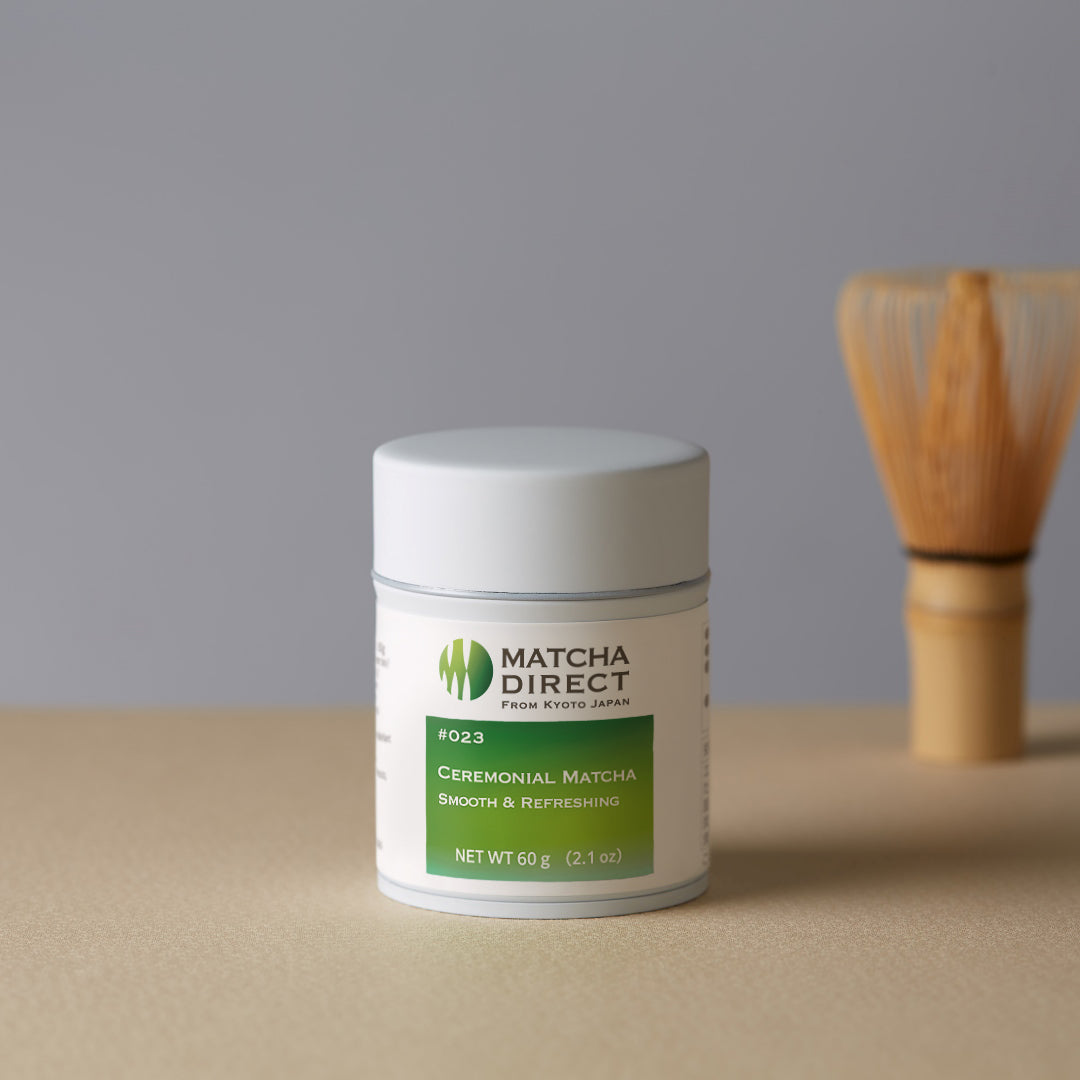Matcha Latte Calories with Tips for a Healthier Version

A matcha latte is a popular beverage that allows you to enjoy the aroma and flavor of matcha. However, while matcha itself is low in calories, the addition of milk and sugar can make the overall calorie count of a matcha latte quite high.
So, how many calories does a typical matcha latte contain? And is there a way to reduce the calories in a matcha latte to make it healthier? This time, we’ll delve into the calories of matcha lattes.
Calories in a Typical Matcha Latte (16 oz)
When considering the calories in a 16-ounce matcha latte purchased at a café, the ingredients might include:
16 oz cup:
- Matcha: 6g
- Hot water: 60ml
- Sugar: 6g
- Whole milk: 300ml
According to the “Japanese Food Composition Database” by Japan’s Ministry of Education, Culture, Sports, Science and Technology, a 16-ounce matcha latte contains approximately 220 kcal.
Why Are Matcha Latte Calories High?
To burn off 200 kcal through exercise, depending on your weight, it might take about 60 minutes of walking or 20 minutes of swimming. The idea of needing to walk for over an hour after drinking a matcha latte might make the calorie count seem high.
So, why are the calories in a matcha latte so high? Let’s break down the ingredients of a matcha latte to understand better.
Matcha
According to the “Japanese Food Composition Database”:
- Matcha: 237 kcal/100g
Typically, about 2g of matcha is used per serving for a thin tea (usucha), but for a 16-ounce matcha latte, it’s about 6g.
- Calories in 6g of matcha: 14.2 kcal
This is quite low compared to the total 220 kcal in the matcha latte.
Sugar
The same database indicates:
- Sugar: 391 kcal/100g
In the matcha latte mentioned earlier, 6g of sugar is used, the same amount as matcha.
- Calories in 6g of sugar: 23.5 kcal
Milk
Finally, let’s consider the milk. According to the same database:
- Whole milk: 61 kcal/100g
While matcha and sugar have more calories per 100g, 300ml (approximately 300g) of milk contains 183 kcal.
Since the amount of milk used in a matcha latte is quite large, it’s clear that most of the calories in a matcha latte come from the milk.
How to Reduce Matcha Latte Calories
Switch to Lower-Calorie Milk
You could try making a matcha latte with milk alternatives that are lower in calories than whole milk. Consider using low-fat milk or non-fat milk. Low-fat milk has about two-thirds of the calories of whole milk, while non-fat milk has roughly half. However, since low-fat and non-fat milk contain less fat, which adds richness, the flavor may be lighter compared to regular milk.
Recently, plant-based milks have also become more affordable and accessible. Starbucks, for instance, offers soy milk, almond milk, and oat milk as options. While the calorie content of almond milk can vary depending on the product, it’s generally similar to that of whole milk. On the other hand, soy milk and oat milk have about two-thirds the calories of low-fat milk.
Since both almond and oat milks are plant-based, they result in a lighter-tasting matcha latte. Depending on the product, some might have a distinct flavor, so it’s a good idea to try pairing almond milk or oat milk with matcha to see what suits your taste.
Reduce Sugar or Use a Low-Calorie Sweetener
You could also try replacing sugar with honey or maple syrup. Honey has 329 kcal/100g, and maple syrup has 266 kcal/100g, which could slightly reduce the calorie content.
Alternatively, you could skip the sugar entirely and add vanilla essence or other flavorings to enjoy the sweetness through aroma. Since personal preference plays a role, feel free to experiment with different options.
Is Matcha Latte Healthy?
Matcha contains a wide range of nutrients, including vitamins and minerals, which is why it’s often referred to as a “superfood.” Unlike other teas, such as black tea, oolong tea, or sencha, matcha is made by grinding tea leaves into a powder and mixing it with hot water. With other teas, you only drink the tea liquid, but with matcha, you consume all the nutrients in the tea leaves, making it a very healthy beverage.
Additionally, the bitterness of matcha can be mellowed by the sweetness of milk and sugar in a matcha latte, making it a drink that even those who aren’t fond of bitter flavors can enjoy. Since milk also contains various nutrients, both plain matcha and matcha lattes can offer health benefits.
For those concerned about calories, you can try the aforementioned methods to reduce calories and enjoy a delicious and healthy matcha latte.
For more detailed information on the health benefits of matcha, please refer to the following link:
https://matchadirect.kyoto/blogs/matcha-101/matcha-nutrition-facts
Calories in Matcha Latte Compared to Other Beverages
<16 oz cup with sugar>
| Matcha Latte | 220 kcal |
|---|---|
| Café Latte | 280 kcal |
| Chai Latte | 240 kcal |
| Hojicha Latte | 170 kcal |
Comparing the calories of other drinks in a 16-ounce cup, you can see that matcha lattes are neither particularly high nor low in calories.
However, compared to other drinks, a matcha latte offers the significant benefit of consuming all the nutrients in the tea leaves. By adjusting the type and amount of milk and sugar, you can manage the calorie content while still taking full advantage of the health benefits of matcha.
“MATCHA DIRECT” Offers Matcha Perfect for Matcha Lattes
Any of the matcha products from "MATCHA DIRECT" can be deliciously enjoyed in a matcha latte.
Our matcha is ground to order and shipped immediately. Freshly ground matcha is vibrantly green and visually stunning. You’ll enjoy the beautiful contrast of white and green when making a matcha latte.
The rich flavor of our matcha won’t be overpowered by the milk, allowing you to fully appreciate the taste. Enjoy the fresh, rich flavor of our matcha!













